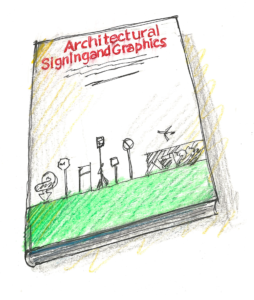John Follis – Before Wayfinding; Before SEGD
October 21, 2019
I’m dedicating this edition of wayneFinding to my mentor, the great John Follis, on the twenty-fifth anniversary of his passing. Why? Because we seem to be in an age of ever shorter memories — I recently asked my Art Center class what they knew about Charles and Ray Eames and all I heard was crickets. These Gen Z kids know the latest photo altering app but were clueless about two of the most important designers of the Twentieth Century. So they probably did not know anything about John Follis. And I’m guessing that many environmental graphics designers and SEGD members are equally unaware of this creative man and his contribution to our interesting field. The following is cribbed from a eulogy I delivered at John’s 1994 funeral and my later article in SEGD’s Messages. Hard to believe that twenty-five years have since gone by.

John hired me a year out of design school and the next few years with him and his seminal firm, John Follis & Associates, radically redirected my design thinking and career. During the previous few years, the mid-late 1960s, John had virtually invented the field we now call environmental graphics and was one of the first, especially on the West Coast, to combine the principles of graphic design with the practices and procedures of architecture and interior design. He integrated industrial design, interiors, typography and color into systematic communication systems for buildings, places and events. Sounds like what we all do all day long these days, right? Well John was one of the first to make EGD into a definable design business segment.
John came out of a post-war Art Center College where there were few borders between design disciplines – the graduates were accomplished in a wide range of media and design areas. He often said the he was lucky to have been a student of Alvin Lustig, now recognized as one of the greatest cross-disciplinary designers ever as well as being a legendary teacher. Ironically, after graduation, John replaced Lustig as art director of the groundbreaking magazine, Arts and Architecture. The progressive publication sponsored the now-famous Case Study House program through which a who’s who list of Los Angeles architects evolved, including Eames, Richard Neutra, Craig Elwood and others. John got to know and eventually collaborate with many of these emerging designers and after a stint as interiors and graphics director at Welton Becket Architects, opened his own design practice around 1960. The office soon entertained a wide range of design assignments including interior design, world’s fair exhibits, corporate identity, furniture systems and, of course, signage. John called his graphic design for buildings, architectural signage – the term we used before wayfinding and environmental graphics.
The most important project for the office and for the emerging design field was designing signage and graphics for Atlantic Richfield Plaza, the massive headquarters project under construction in Los Angeles. Atlantic Richfield, led by its design and art-buff president, Robert O. Anderson, had adopted the marketing name Arco and was engaging the top designers in the world for new graphics, breakthrough designs in architecture, gas stations, products and advertising. The impressive roster included John Massey, Elliot Noyes and most famous of all, legendary designer and architect Herbert Bayer, formerly of Europe’s vaunted Bauhaus, where many critics believe modernism was born in pre-Hitler Germany. Bayer advised Arco on all matters of architecture, design, typography and art.
Through the building’s interior designer, John met Bayer, leading Arco to hire the Follis firm for what was then likely one of the biggest and most thourough sign programs done to date. That contract and the influential signage that the Follis team created put John Follis & Associates on the map while setting the stage for the new design discipline. John applied the architectural design sequence of programming, design, construction documents and construction administration to the project and established the now familiar four-phase contract and process common to thousands of signage and related projects in studios around the globe.
In 1975 John returned from a trip to Houston with news that he and other like-minded designers for around the US, including Rich Burns, Jim Glass and John Berry, were starting a new professional design organization, the Society of Environmental Graphic Designers. The name has since been refined a couple times but SEGD has grown into a respected professional association with over two thousand members.
John and co-author David Hammer documented the firm’s novel process in the EGD field’s first important book, Architectural Signage and Graphics. The instructive book became the bible for nearly all of us early EGD practitioners and still reads well today.
But John’s greatest legacy may be his overall approach to design. He believed that everything can and should be designed. And that universal principles underlie all design disciplines. And that design is an important calling that can improve the world around us in countless ways. He ran his office that way and it was terrific to be there in that interesting time in the field of design.

